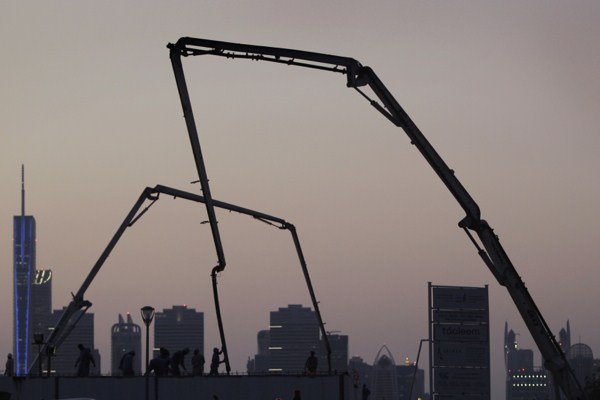After a hiatus following the 2008 financial crisis and the upheavals of the Arab Spring, multibillion-dollar “mega-projects” are once again being built at breakneck speed in the oil- and gas-rich kingdoms of the Persian Gulf. At first glance, their resumption signifies that the Gulf states have successfully weathered the Middle East’s political and economic storms in recent years. Moreover, successful bids for global events such as the 2020 World Expo in Dubai and the 2022 World Cup in Qatar will ensure a continuing focus on major infrastructural developments through at least the end of the decade.
But there’s another story behind all this development. Declining oil prices and intensifying pressures on fiscal sustainability inject an element of uncertainty into many of the planned projects, from an ambitious rail network across the Gulf Cooperation Council (GCC) to a huge new port in Oman. That suggests Gulf governments may have to scale back project funding sooner than officials may care to acknowledge.
The list of prominent mega-projects already underway across the Gulf states can seem dizzying. In the United Arab Emirates, Dubai opened the initial phase of the $32 billion Dubai World Central airport to passenger airlines in October 2013, with a projected final capacity of 120 million passengers by 2020. The 1,350-mile railway project to link six GCC states, estimated for completion by 2018 at a cost of $15.4 billion, is underway. So are several rail projects within Saudi Arabia, connecting mining areas in the north to industrial facilities in the south, as well as a network linking the kingdom’s east and west coasts and a $22.5 billion metro in the capital, Riyadh.

